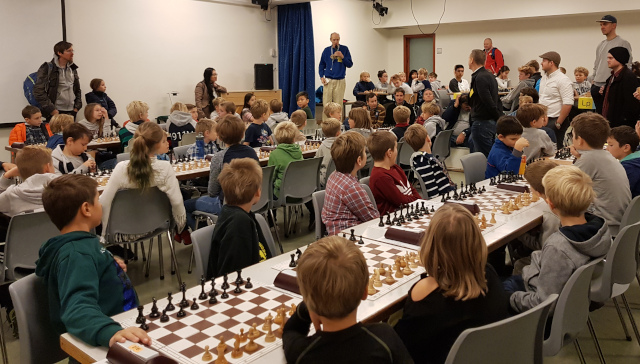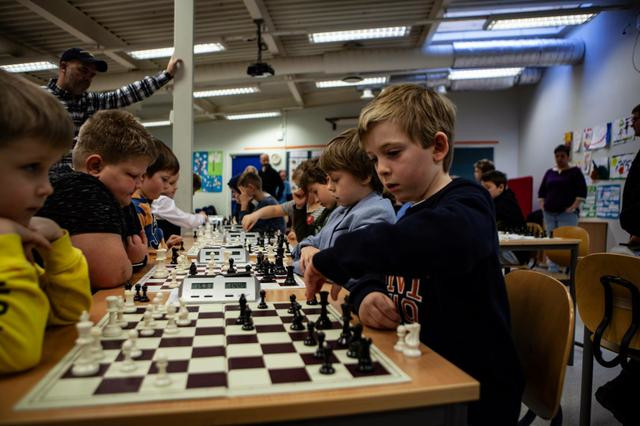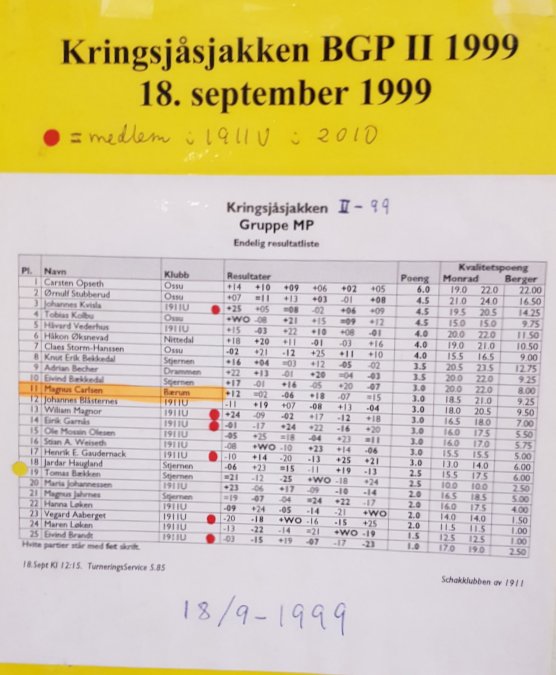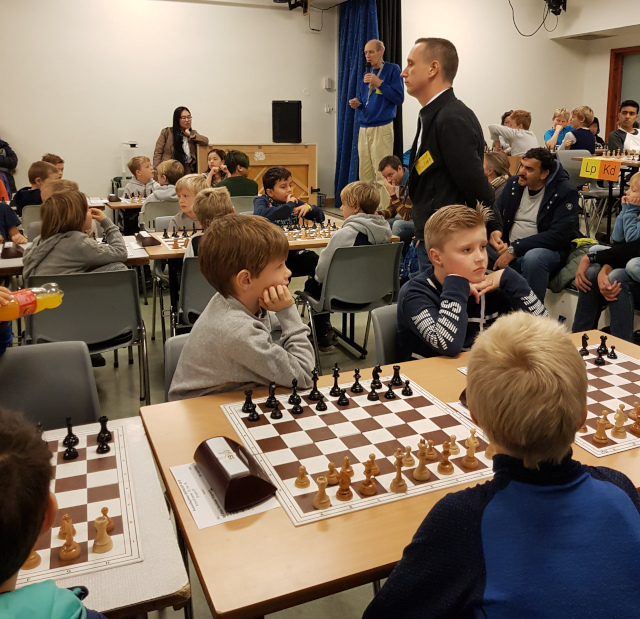The Barnas Grand Prix – Tournaments for Children and Juniors
The Barnas Grand Prix in Norway is a tournament series for children and juniors that is played every year. At the end of series a Grand Prix ranking decides the winner. The number of tournaments played varies from year to year but every club/organiser can apply to host such a tournament for young players.
Title picture: Håvard Haug (center, in the red sweater) won the Mikroputt group, in which 73 players started.
The tournaments are divided into five age groups:
- Mikroputt (U9)
- Miniputt (U11)
- Lilliputt (U13)
- Kadett (U17)
- Ungdom (U26)
Some tournaments also offer groups for beginners for players who play their first tournament, and occasionally parents are invited to try their luck in a "drivers group". The Grand Prix regulations stipulate that at least one third of all participants win a prize. In the U13 tournaments and in all tournaments for younger players, every participant gets a confirmation of participation, usually a small cup. Thus, regular participants quickly create a sizeable collection of tournament trophies.

The Korsvollsjakken in Oslo
However, cups are not the only prizes. In the tournaments which GM Olga Dolzhikova organises once a month at the grammar school for sport in Bærum, which also trains chess players, the young talents win playing pieces (or something similar) from the world of Dragulf - the dragon which gave the children's chess club its name.
In each tournament the players get points for their ranking and the best five tournaments of a player are included into the overall Grand Prix rankings. For the first place in a tournament a player gets 20 points, after that 17, 15, 13, 11, 10, 9, 8, 7, 6, and 5 points for all other partipants are awarded. If more than 50 players participate in the tournament 20, 19, 18, etc. points are awarded.
In 2018, 91 tournaments with about 3,000 particpants were played, and about half of the participants started in the youngest age group. Which might be due to the fact that some children soon stop to play chess whereas the better players soon start to compete in tournaments for adults.

Beginners group at the Grand Prix in Moss 20.1.2019 | Photo: Bjørn Berg Johansen
The biggest tournaments take place in Oslo and particularly popular are those organised by the Klub 1911 which recently attracted more than 100 players. The person, who is mainly responsible for this boom, also once took part in such a tournament. In 1999 Ørnulf Stubberud and Johannes Kvisla, who are FIDE Masters today, finished second and third while Carsten Opseth won the tournament. A certain Magnus Carlsen finished on place 11, scoring 3 points from 6 games.

11. place: Magnus Carlsen
Scarcely any world champion has managed to captivate chess lovers to the extent Carlsen has. The enormously talented Norwegian hasn't been systematically trained within the structures of a major chess-playing nation such as Russia, the Ukraine or China.
The most recent edition of the 1911 tournament also saw prominent people from the world of chess. IM Torstein Bae, who regularly comments Carlsen's World Champion matches in Norwegian TV, worked as an arbiter and first of all had to explain the rules to the beginners.

IM Torstein Bae
Meanwhile, Geir Nesheim, the president of the Norwegian Chess Federation, helped to sell sausages and waffles (both are almost obligatory in Norway).
The first tournaments in 2019 again attracted a lot of players. And every time before the round began the arbiter asked whether the players still had questions. They usually have. And e.g. want to know what happens if both players resign or whether there are still two rounds to play until the prizes are awarded and players get their cups.
Homepage...



























